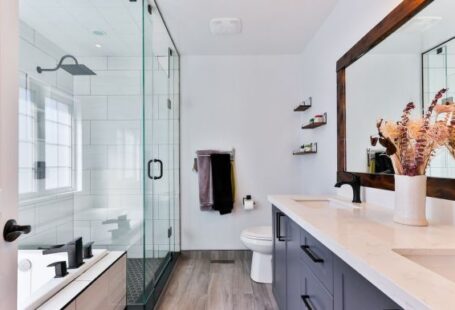The colors we choose for our home decor can have a significant impact on the overall ambiance and atmosphere of our living spaces. Whether you are redecorating your entire home or just looking to update a specific room, selecting the perfect color scheme is crucial. It can transform a room from dull and uninspiring to vibrant and inviting. In this article, we will explore some tips and considerations to help you choose the perfect color scheme for your home decor.
Understand the Room’s Purpose
Before diving into color options, it is essential to consider the purpose of the room you are decorating. Different colors evoke different emotions and moods, so you want to align the color scheme with the room’s intended use. For instance, soothing and calming colors like blues and greens are ideal for bedrooms, while vibrant and energetic colors like reds and yellows work well in living areas.
Consider the Lighting
Lighting plays a significant role in how colors appear in a room. Natural light and artificial lighting can both affect the way colors are perceived. Before finalizing a color scheme, take the time to observe how the lighting in the room changes throughout the day. This will help you determine whether the colors you have chosen will look as intended in different lighting conditions.
Create a Mood Board
A mood board is a visual representation of your desired color scheme. It can help you visualize how different colors will work together and give you a better idea of the overall look and feel of the room. Collect paint swatches, fabric samples, and magazine clippings to create a collage that represents the colors and textures you want in your home decor.
Explore Color Combinations
When choosing a color scheme, it is essential to consider how different colors will work together in a space. One approach is to choose colors from the same family, such as different shades of blues or greens. This monochromatic color scheme can create a sense of harmony and cohesion. Another option is to select complementary colors, which are opposite each other on the color wheel. This can create a bold and dynamic look.
Consider the Size of the Room
The size of the room should also be taken into account when selecting a color scheme. Lighter colors tend to make a room feel more spacious, while darker colors can create a cozy and intimate atmosphere. If you have a small room, consider using light colors on the walls and furniture to make the space feel larger. On the other hand, if you have a large room, you can experiment with darker and bolder colors to add depth and character.
Test Before Committing
Before committing to a particular color scheme, it is crucial to test the colors in the actual space. Paint small sections of the walls or use temporary wallpaper samples to see how the colors look in different lighting conditions. This will give you a better idea of how the colors will work in your home decor before making any permanent changes.
Incorporate Personal Preferences
While it is essential to consider the purpose of the room and the overall aesthetic you want to achieve, do not forget to incorporate your personal preferences. Your home should reflect your unique style and personality, so choose colors that resonate with you and make you feel comfortable and happy.
In conclusion, choosing the perfect color scheme for your home decor requires careful consideration of the room’s purpose, lighting conditions, and personal preferences. Creating a mood board and exploring different color combinations can help you visualize the final look and feel of the room. Remember to test the colors in the actual space before committing to any permanent changes. With these tips and considerations in mind, you can create a home decor that is both visually pleasing and reflective of your personal style.





